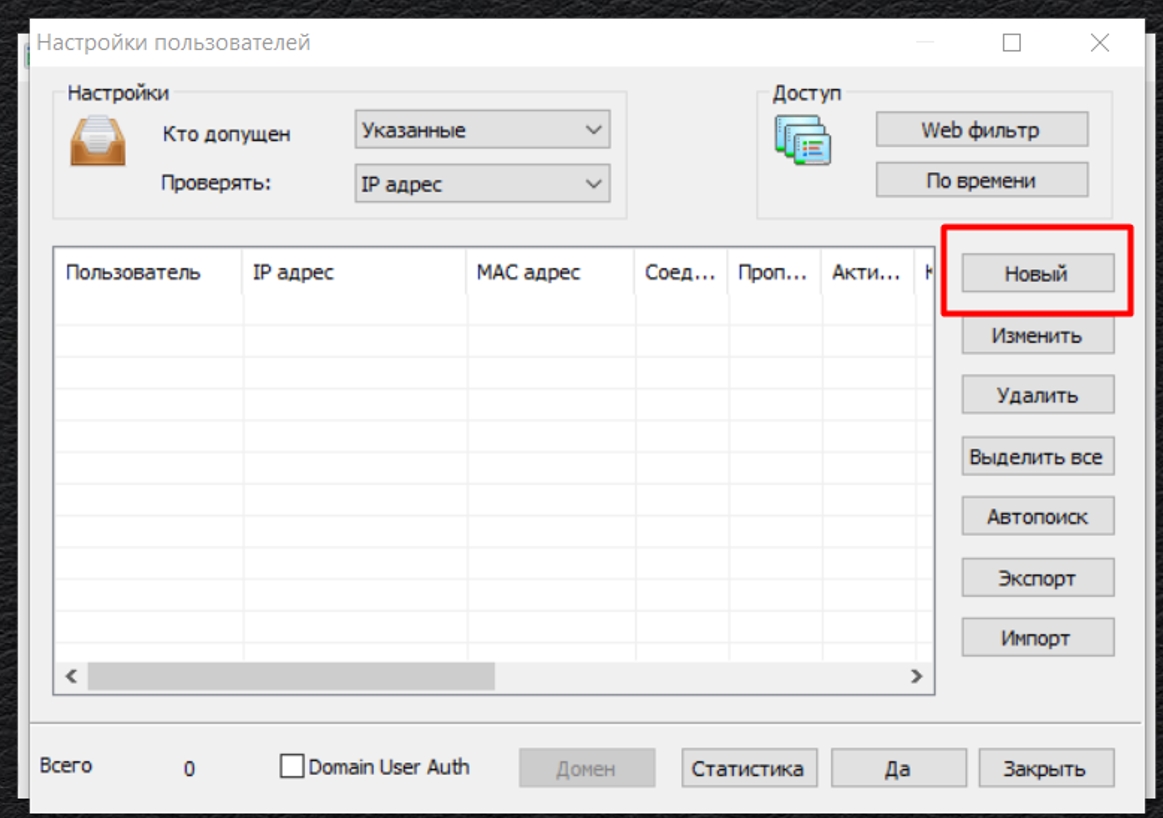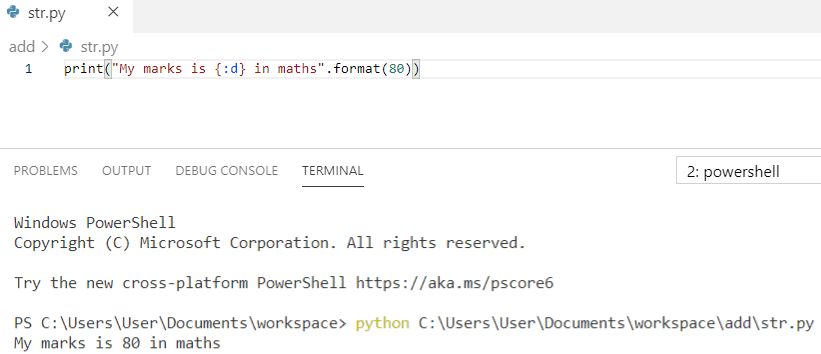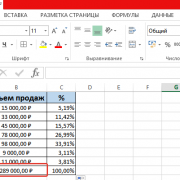Учимся применять оконные функции
Содержание:
- UPDATE несколько записей
- Синтаксис
- Пример — сортировка по относительной позиции
- SQL ORDER BY with expressions
- Examples
- Introduction to MySQL ORDER BY clause
- SQL Учебник
- SQL ORDER BY clause examples
- RDBMS
- MySQL ORDER BY Descending
- SQL Server ORDER BY clause example
- A) Sort a result set by one column in ascending order
- B) Sort a result set by one column in descending order
- C) Sort a result set by multiple columns
- D) Sort a result set by multiple columns and different orders
- E) Sort a result set by a column that is not in the select list
- F) Sort a result set by an expression
- G) Sort by ordinal positions of columns
- SQL References
- SQL INNER JOIN
- Introduction to the SQL Server ORDER BY clause
- Синтаксис
- Кейс. Модели атрибуции
- SQL ORDER BY examples
UPDATE несколько записей
Именно предложение WHERE определяет, сколько записей будет обновлено.
Следующая инструкция SQL обновит имя контакта до «Juan» для всех записей, где страна — «Mexico»:
Пример
UPDATE Customers
SET ContactName=’Juan’
WHERE Country=’Mexico’;
Выбор из таблицы «Customers» теперь будет выглядеть следующим образом:
| CustomerID | CustomerName | ContactName | Address | City | PostalCode | Country |
|---|---|---|---|---|---|---|
| 1 | Alfreds Futterkiste | Alfred Schmidt | Obere Str. 57 | Frankfurt | 12209 | Germany |
| 2 | Ana Trujillo Emparedados y helados | Juan | Avda. de la Constitución 2222 | México D.F. | 05021 | Mexico |
| 3 | Antonio Moreno Taquería | Juan | Mataderos 2312 | México D.F. | 05023 | Mexico |
| 4 | Around the Horn | Thomas Hardy | 120 Hanover Sq. | London | WA1 1DP | UK |
| 5 | Berglunds snabbköp | Christina Berglund | Berguvsvägen 8 | Luleå | S-958 22 | Sweden |
Синтаксис
Окно определяется с помощью обязательной инструкции OVER(). Давайте рассмотрим синтаксис этой инструкции:
SELECT Название функции (столбец для вычислений) OVER ( PARTITION BY столбец для группировки ORDER BY столбец для сортировки ROWS или RANGE выражение для ограничения строк в пределах группы )
Теперь разберем как поведет себя множество строк при использовании того или иного ключевого слова функции. А тренироваться будем на простой табличке содержащей дату, канал с которого пришел пользователь и количество конверсий:
OVER()
Откроем окно при помощи OVER() и просуммируем столбец «Conversions»:
SELECT Date , Medium , Conversions , SUM(Conversions) OVER() AS 'Sum' FROM Orders
Мы использовали инструкцию OVER() без предложений. В таком варианте окном будет весь набор данных и никакая сортировка не применяется. Появился новый столбец «Sum» и для каждой строки выводится одно и то же значение 14. Это сквозная сумма всех значений колонки «Conversions».
PARTITION BY
Теперь применим инструкцию PARTITION BY, которая определяет столбец, по которому будет производиться группировка и является ключевой в разделении набора строк на окна:
SELECT Date , Medium , Conversions , SUM(Conversions) OVER(PARTITION BY Date) AS 'Sum' FROM Orders
Инструкция PARTITION BY сгруппировала строки по полю «Date». Теперь для каждой группы рассчитывается своя сумма значений столбца «Conversions».
ORDER BY
Попробуем отсортировать значения внутри окна при помощи ORDER BY:
SELECT Date , Medium , Conversions , SUM(Conversions) OVER(PARTITION BY Date ORDER BY Medium) AS 'Sum' FROM Orders
К предложению PARTITION BY добавилось ORDER BY по полю «Medium». Таким образом мы указали, что хотим видеть сумму не всех значений в окне, а для каждого значения «Conversions» сумму со всеми предыдущими. То есть мы посчитали нарастающий итог.
ROWS или RANGE
Инструкция ROWS позволяет ограничить строки в окне, указывая фиксированное количество строк, предшествующих или следующих за текущей.
Инструкция RANGE, в отличие от ROWS, работает не со строками, а с диапазоном строк в инструкции ORDER BY. То есть под одной строкой для RANGE могут пониматься несколько физических строк одинаковых по рангу.
Обе инструкции ROWS и RANGE всегда используются вместе с ORDER BY.
В выражении для ограничения строк ROWS или RANGE также можно использовать следующие ключевые слова:
- UNBOUNDED PRECEDING — указывает, что окно начинается с первой строки группы;
- UNBOUNDED FOLLOWING – с помощью данной инструкции можно указать, что окно заканчивается на последней строке группы;
- CURRENT ROW – инструкция указывает, что окно начинается или заканчивается на текущей строке;
- BETWEEN «граница окна» AND «граница окна» — указывает нижнюю и верхнюю границу окна;
- «Значение» PRECEDING – определяет число строк перед текущей строкой (не допускается в предложении RANGE).;
- «Значение» FOLLOWING — определяет число строк после текущей строки (не допускается в предложении RANGE).
Разберем на примере:
SELECT Date , Medium , Conversions , SUM(Conversions) OVER(PARTITION BY Date ORDER BY Conversions ROWS BETWEEN CURRENT ROW AND 1 FOLLOWING) AS 'Sum' FROM Orders
В данном случае сумма рассчитывается по текущей и следующей ячейке в окне. А последняя строка в окне имеет то же значение, что и столбец «Conversions», потому что больше не с чем складывать.
Комбинируя ключевые слова, вы можете подогнать диапазон работы оконной функции под вашу специфическую задачу.
Пример — сортировка по относительной позиции
Вы также можете использовать SQLite оператор ORDER BY для сортировки по относительной позиции в результирующем наборе, где первое поле в наборе результатов равно 1. Следующее поле равно 2 и т.д.
Например:
PgSQL
SELECT employee_id,
last_name,
first_name
FROM employees
WHERE employee_id > 45
ORDER BY 3 DESC;
|
1 |
SELECTemployee_id, last_name, first_name FROMemployees WHEREemployee_id>45 ORDERBY3DESC; |
Этот SQLite пример ORDER BY будет возвращать результирующий набор, отсортированный по полю first_name в порядке убывания, поскольку поле first_name находится в позиции № 3 в результирующем наборе и будет эквивалентно следующему ORDER BY:
PgSQL
SELECT employee_id,
last_name,
first_name
FROM employees
WHERE employee_id > 45
ORDER BY first_name DESC;
|
1 |
SELECTemployee_id, last_name, first_name FROMemployees WHEREemployee_id>45 ORDERBYfirst_nameDESC; |
SQL ORDER BY with expressions
The clause can also accept expressions. For example, you can use the string function to construct full names of employees, and then sort the result set by the full name as the following query:
|
1 2 3 4 5 |
SELECT CONCAT(lastname,’,’,firstname)fullname FROM employees ORDERBYCONCAT(lastname,’,’,firstname); |
The column alias is used for formatting the output of the result set. You can use the column alias in the ORDER BY clause rather than expression. The following query produces the same output:
|
1 2 3 4 5 |
SELECT CONCAT(lastname,’,’,firstname)fullname FROM employees ORDERBYCONCAT(lastname,’,’,firstname); |
SQL ORDER BY with positional number
The positional number is the position of the column in the clause. The position number starts with 1, 2, 3, etc. SQL allows you to use these positional numbers rather than columns or expressions to sort the result set.
The following statement sorts the employees by hired date in descending order to find the most junior employees in the company:
|
1 2 3 4 5 |
SELECT lastname,firstname,DATE(hiredate) FROM employees ORDERBY3DESC; |
SQL sorts the result set by column, which has positional number 3.
The positional number that refers to a specific column is changed when you change the columns in the clause. This may lead to an unexpected result if you forget to change the positional number. Therefore, it is not recommended to use the positional number in the clause. You only use it if you have no choice.
In this tutorial, you’ve learned how to use the clause to sort result sets returned by a statement.
- Was this tutorial helpful ?
Examples
I think the easiest way to learn is to see examples. So, I’ll show you a few ways you can use the SQL ORDER BY clause in Oracle.
I’ll be using this table to perform the SELECT queries on.
| SALESPERSON_ID | FIRST_NAME | SALARY | COMMISSION | HIRE_DATE |
| 1 | John | 90000 | 1000 | 1-Jan-16 |
| 2 | Sally | 95000 | 500 | 5-Sep-16 |
| 3 | Mark | 101000 | 800 | 12-Aug-16 |
| 4 | Tina | 87000 | 900 | 24-Oct-16 |
| 5 | Steve | 100000 | 500 | 2-Feb-16 |
| 6 | Michelle | 120000 | 600 | 3-Dec-16 |
| 7 | Alex | 85000 | (null) | 17-Jan-16 |
| 8 | Jo | 115000 | 1200 | 30-Oct-16 |
Example 1 – ORDER BY Column Name
This example orders by a single column name.
| SALESPERSON_ID | FIRST_NAME | SALARY | COMMISSION | HIRE_DATE |
| 7 | Alex | 85000 | (null) | 17-Jan-16 |
| 8 | Jo | 115000 | 1200 | 30-Oct-16 |
| 1 | John | 90000 | 1000 | 1-Jan-16 |
| 3 | Mark | 101000 | 800 | 12-Aug-16 |
| 6 | Michelle | 120000 | 600 | 3-Dec-16 |
| 2 | Sally | 95000 | 500 | 5-Sep-16 |
| 5 | Steve | 100000 | 500 | 2-Feb-16 |
| 4 | Tina | 87000 | 900 | 24-Oct-16 |
All of the records are ordered by the first_name column. ASC or DESC was not specified, so by default, they are ordered in ASC order.
Example 2 – ORDER BY Column Name using ASC
This example orders by a column name and uses the ASC keyword.
| SALESPERSON_ID | FIRST_NAME | SALARY | COMMISSION | HIRE_DATE |
| 7 | Alex | 85000 | (null) | 17-Jan-16 |
| 4 | Tina | 87000 | 900 | 24-Oct-16 |
| 1 | John | 90000 | 1000 | 1-Jan-16 |
| 2 | Sally | 95000 | 500 | 5-Sep-16 |
| 5 | Steve | 100000 | 500 | 2-Feb-16 |
| 3 | Mark | 101000 | 800 | 12-Aug-16 |
| 8 | Jo | 115000 | 1200 | 30-Oct-16 |
| 6 | Michelle | 120000 | 600 | 3-Dec-16 |
This sorts the data in the table by salary in ascending order, which for numbers, is from smallest to highest.
Introduction to MySQL ORDER BY clause
When you use the statement to query data from a table, the result set is not sorted. It means that the rows in the result set can be in any order.
To sort the result set, you add the clause to the statement. The following illustrates the syntax of the clause:
In this syntax, you specify the one or more columns which you want to sort after the clause.
The stands for ascending and the stands for descending. You use to sort the result set in ascending order and to sort the result set in descending order.
This clause sorts the result set in ascending order:
And this clause sorts the result set in descending order:
By default, the clause uses if you don’t explicitly specify any option.
Therefore, the following clauses are equivalent:
and
If you want to sort the result set by multiple columns, you specify a comma-separated list of columns in the clause:
It is possible to sort the result by a column in ascending order, and then by another column in descending order:
In this case, the clause:
- First, sort the result set by the values in the in ascending order.
- Then, sort the sorted result set by the values in the in descending order. Note that the order of values in the will not change in this step, only the order of values in the changes.
Note that the clause is always evaluated after the and clause.

SQL Учебник
SQL ГлавнаяSQL ВведениеSQL СинтаксисSQL SELECTSQL SELECT DISTINCTSQL WHERESQL AND, OR, NOTSQL ORDER BYSQL INSERT INTOSQL Значение NullSQL Инструкция UPDATESQL Инструкция DELETESQL SELECT TOPSQL MIN() и MAX()SQL COUNT(), AVG() и …SQL Оператор LIKESQL ПодстановочныйSQL Оператор INSQL Оператор BETWEENSQL ПсевдонимыSQL JOINSQL JOIN ВнутриSQL JOIN СлеваSQL JOIN СправаSQL JOIN ПолноеSQL JOIN СамSQL Оператор UNIONSQL GROUP BYSQL HAVINGSQL Оператор ExistsSQL Операторы Any, AllSQL SELECT INTOSQL INSERT INTO SELECTSQL Инструкция CASESQL Функции NULLSQL ХранимаяSQL Комментарии
SQL ORDER BY clause examples
We will use the table in the sample database for the demonstration.
1) Using SQL clause to sort values in one column example
The following statement retrieves the employee id, first name, last name, hire date, and salary from the table:
It seems that the rows appear as they are stored in the table. To sort employees by first names alphabetically, you add an clause to query as follows:
The result set now is sorted by the column.
2) Using SQL clause to sort values in multiple columns example
To sort by the employees by the first name in ascending order and the last name in descending order, you use the following statement:
First, the database system sorts the result set by the first name in ascending order, then it sorts the sorted result set by the last name in descending order. Notice the change in position of two employees: and
3) Using SQL clause to sort values in a numeric column example
SQL allows you to sort data alphabetically as shown in the previous example and also sort data numerically. For example, the following statement selects employee data and sorts the result set by salary in the descending order:
4) Using SQL to sort dates example
Besides the character and numeric, SQL allows you to sort the result set by date. The following statement sorts the employees by values in the column in the ascending order.
To view the latest employees who have just joined the company, you sort the employees by the hire dates in the descending order as shown in the following statement:
In this tutorial, you have learned how to use the SQL clause to sort the result set based on one or more columns in the ascending or descending order.
RDBMS
RDBMS stands for Relational Database Management System.
RDBMS is the basis for SQL, and for all modern database systems such as MS SQL Server, IBM DB2, Oracle, MySQL, and Microsoft Access.
The data in RDBMS is stored in database objects called tables. A table is a collection of related data entries and it consists of columns and rows.
Look at the «Customers» table:
Example
SELECT * FROM Customers;
Every table is broken up into smaller entities called fields. The fields in
the Customers table consist of CustomerID, CustomerName, ContactName, Address,
City, PostalCode and Country. A field is a column in a table that is designed to maintain
specific information about every record in the table.
A record, also called a row, is each individual entry that exists in a table.
For example, there are 91 records in the above Customers table. A record is a
horizontal entity in a table.
A column is a vertical entity in a table that contains all information
associated with a specific field in a table.
❮ Previous
Next ❯
MySQL ORDER BY Descending
To sort data in Descending order, use Order By statement followed by the DESC keyword. The following are the list of ways we can sort data in Descending order.
For example, If you are searching for shoes on Amazon. If you type shoe in the search bar, it displays shoes by Rating. It means, Shoes are sorted as per the Rating. Technically,
MySQL Sort in Descending Order Example
In this MySQL Order By Desc example, we are going to sort customer’s data in Descending Order using the Sales column.
From the above screenshot, you can see data sorted by Sales in Descending order.
MySQL Order By Multiple Columns in Descending Order
In this order by DESC example, we are sorting the Data using multiple columns. First, data sorted by Education in Descending Order and then sorted by Yearly Income in Descending Order.
Sort in Descending Order using Alias Column
In this MySQL Order By Desc example, We are going to sort the table Data in Descending Order using the Alias Column Name.
We added 12500 to each yearly income column and used Alias to assign a New Income name. Next, we used the Alias name in the Order By clause. It means, Data sort by New Income in Descending Order.
SQL Server ORDER BY clause example
We will use the table in the sample database from the demonstration.
A) Sort a result set by one column in ascending order
The following statement sorts the customer list by the first name in ascending order:
In this example, because we did not specify or , the clause used by default.
B) Sort a result set by one column in descending order
The following statement sorts the customer list by the first name in descending order.
In this example, because we specified the explicitly, the clause sorted the result set by values in the column in the descending order.
C) Sort a result set by multiple columns
The following statement retrieves the first name, last name, and city of the customers. It sorts the customer list by the city first and then by the first name.
D) Sort a result set by multiple columns and different orders
The following statement sorts the customers by the city in descending order and the sort the sorted result set by the first name in ascending order.
E) Sort a result set by a column that is not in the select list
It is possible to sort the result set by a column that does not appear on the select list. For example, the following statement sorts the customer by the state even though the column does not appear on the select list.
Note that the column is defined in the table. If it was not, then you would have an invalid query.
F) Sort a result set by an expression
The function returns the number of characters of a string. The following statement uses the function in the clause to retrieve a customer list sorted by the length of the first name.
G) Sort by ordinal positions of columns
SQL Server allows you to sort the result set based on the ordinal positions of columns that appear in the select list.
The following statement sorts the customers by first name and last name. But instead of specifying the column names explicitly, it uses the ordinal positions of the columns:
In this example, 1 means the column and 2 means the column.
Using the ordinal positions of columns in the clause is considered as bad programming practice for a couple of reasons.
- First, the columns in a table don’t have ordinal positions and need to be referenced by name.
- Second, when you modify the select list, you may forget to make the corresponding changes in the clause.
Therefore, it is a good practice to always specify the column names explicitly in the clause.
In this tutorial, you have learned how to use the SQL Server clause to sort a result set by columns in ascending or descending order.
SQL References
SQL Keywords
ADD
ADD CONSTRAINT
ALTER
ALTER COLUMN
ALTER TABLE
ALL
AND
ANY
AS
ASC
BACKUP DATABASE
BETWEEN
CASE
CHECK
COLUMN
CONSTRAINT
CREATE
CREATE DATABASE
CREATE INDEX
CREATE OR REPLACE VIEW
CREATE TABLE
CREATE PROCEDURE
CREATE UNIQUE INDEX
CREATE VIEW
DATABASE
DEFAULT
DELETE
DESC
DISTINCT
DROP
DROP COLUMN
DROP CONSTRAINT
DROP DATABASE
DROP DEFAULT
DROP INDEX
DROP TABLE
DROP VIEW
EXEC
EXISTS
FOREIGN KEY
FROM
FULL OUTER JOIN
GROUP BY
HAVING
IN
INDEX
INNER JOIN
INSERT INTO
INSERT INTO SELECT
IS NULL
IS NOT NULL
JOIN
LEFT JOIN
LIKE
LIMIT
NOT
NOT NULL
OR
ORDER BY
OUTER JOIN
PRIMARY KEY
PROCEDURE
RIGHT JOIN
ROWNUM
SELECT
SELECT DISTINCT
SELECT INTO
SELECT TOP
SET
TABLE
TOP
TRUNCATE TABLE
UNION
UNION ALL
UNIQUE
UPDATE
VALUES
VIEW
WHERE
MySQL Functions
String Functions
ASCII
CHAR_LENGTH
CHARACTER_LENGTH
CONCAT
CONCAT_WS
FIELD
FIND_IN_SET
FORMAT
INSERT
INSTR
LCASE
LEFT
LENGTH
LOCATE
LOWER
LPAD
LTRIM
MID
POSITION
REPEAT
REPLACE
REVERSE
RIGHT
RPAD
RTRIM
SPACE
STRCMP
SUBSTR
SUBSTRING
SUBSTRING_INDEX
TRIM
UCASE
UPPER
Numeric Functions
ABS
ACOS
ASIN
ATAN
ATAN2
AVG
CEIL
CEILING
COS
COT
COUNT
DEGREES
DIV
EXP
FLOOR
GREATEST
LEAST
LN
LOG
LOG10
LOG2
MAX
MIN
MOD
PI
POW
POWER
RADIANS
RAND
ROUND
SIGN
SIN
SQRT
SUM
TAN
TRUNCATE
Date Functions
ADDDATE
ADDTIME
CURDATE
CURRENT_DATE
CURRENT_TIME
CURRENT_TIMESTAMP
CURTIME
DATE
DATEDIFF
DATE_ADD
DATE_FORMAT
DATE_SUB
DAY
DAYNAME
DAYOFMONTH
DAYOFWEEK
DAYOFYEAR
EXTRACT
FROM_DAYS
HOUR
LAST_DAY
LOCALTIME
LOCALTIMESTAMP
MAKEDATE
MAKETIME
MICROSECOND
MINUTE
MONTH
MONTHNAME
NOW
PERIOD_ADD
PERIOD_DIFF
QUARTER
SECOND
SEC_TO_TIME
STR_TO_DATE
SUBDATE
SUBTIME
SYSDATE
TIME
TIME_FORMAT
TIME_TO_SEC
TIMEDIFF
TIMESTAMP
TO_DAYS
WEEK
WEEKDAY
WEEKOFYEAR
YEAR
YEARWEEK
Advanced Functions
BIN
BINARY
CASE
CAST
COALESCE
CONNECTION_ID
CONV
CONVERT
CURRENT_USER
DATABASE
IF
IFNULL
ISNULL
LAST_INSERT_ID
NULLIF
SESSION_USER
SYSTEM_USER
USER
VERSION
SQL Server Functions
String Functions
ASCII
CHAR
CHARINDEX
CONCAT
Concat with +
CONCAT_WS
DATALENGTH
DIFFERENCE
FORMAT
LEFT
LEN
LOWER
LTRIM
NCHAR
PATINDEX
QUOTENAME
REPLACE
REPLICATE
REVERSE
RIGHT
RTRIM
SOUNDEX
SPACE
STR
STUFF
SUBSTRING
TRANSLATE
TRIM
UNICODE
UPPER
Numeric Functions
ABS
ACOS
ASIN
ATAN
ATN2
AVG
CEILING
COUNT
COS
COT
DEGREES
EXP
FLOOR
LOG
LOG10
MAX
MIN
PI
POWER
RADIANS
RAND
ROUND
SIGN
SIN
SQRT
SQUARE
SUM
TAN
Date Functions
CURRENT_TIMESTAMP
DATEADD
DATEDIFF
DATEFROMPARTS
DATENAME
DATEPART
DAY
GETDATE
GETUTCDATE
ISDATE
MONTH
SYSDATETIME
YEAR
Advanced Functions
CAST
COALESCE
CONVERT
CURRENT_USER
IIF
ISNULL
ISNUMERIC
NULLIF
SESSION_USER
SESSIONPROPERTY
SYSTEM_USER
USER_NAME
MS Access Functions
String Functions
Asc
Chr
Concat with &
CurDir
Format
InStr
InstrRev
LCase
Left
Len
LTrim
Mid
Replace
Right
RTrim
Space
Split
Str
StrComp
StrConv
StrReverse
Trim
UCase
Numeric Functions
Abs
Atn
Avg
Cos
Count
Exp
Fix
Format
Int
Max
Min
Randomize
Rnd
Round
Sgn
Sqr
Sum
Val
Date Functions
Date
DateAdd
DateDiff
DatePart
DateSerial
DateValue
Day
Format
Hour
Minute
Month
MonthName
Now
Second
Time
TimeSerial
TimeValue
Weekday
WeekdayName
Year
Other Functions
CurrentUser
Environ
IsDate
IsNull
IsNumeric
SQL Quick Ref
SQL INNER JOIN
Команда возвращает строки, имеющие совпадающие значения в обеих таблицах.
Следующий SQL выбирает все заказы с информацией о клиенте:
Пример
SELECT Orders.OrderID, Customers.CustomerNameFROM OrdersINNER JOIN
Customers ON Orders.CustomerID = Customers.CustomerID;
Примечание: Ключевое слово INNER JOIN выбирает все строки из обеих таблиц до тех пор, пока существует соответствие между столбцами.
Если в таблице «Заказы» есть записи, которые не имеют совпадений в разделе «Клиенты», то эти заказы не будут показаны!
Следующая инструкция SQL выбирает все заказы с информацией о клиенте и грузоотправителе:
Пример
SELECT Orders.OrderID, Customers.CustomerName, Shippers.ShipperNameFROM
((OrdersINNER JOIN Customers ON Orders.CustomerID = Customers.CustomerID)
INNER JOIN Shippers ON Orders.ShipperID = Shippers.ShipperID);
Introduction to the SQL Server ORDER BY clause
When you use the statement to query data from a table, the order of rows in the result set is not guaranteed. It means that SQL Server can return a result set with an unspecified order of rows.
The only way for you to guarantee that the rows in the result set are sorted is to use the clause. The following illustrates the clause syntax:
In this syntax:
|
First, you specify a column name or an expression on which to sort the result set of the query. If you specify multiple columns, the result set is sorted by the first column and then that sorted result set is sorted by the second column, and so on.
The columns that appear in the clause must correspond to either column in the select list or to columns defined in the table specified in the clause.
|
Second, use or to specify the whether the values in the specified column should be sorted in ascending or descending order.
The sorts the result from the lowest value to the highest value while the sorts the result set from the highest value to the lowest one.
If you don’t explicitly specify or , SQL Server uses as the default sort order. Also, SQL Server treats NULL as the lowest values.
When processing the statement that has an clause, the clause is the very last clause to be processed.
Синтаксис
Синтаксис для предложения ORDER BY в PostgreSQL:
SELECT expressions
FROM tables
ORDER BY expression ;
Параметры или аргументы
- expressions
- Столбцы или вычисления, которые вы хотите получить.
- tables
- Таблицы, из которых вы хотите получить записи. В операторе FROM должна быть указана хотя бы одна таблица.
- WHERE conditions
- Необязательный. Условия, которые должны быть выполнены для записей, которые будут выбраны.
- ASC
- Необязательный. Он сортирует результирующий набор в порядке возрастания по expression (по умолчанию, если модификатор не указан).
- DESC
- Необязательный. Он сортирует результирующий набор в порядке убывания по expression.
- NULLS FIRST
- Необязательный. Если указано, все значения NULL сортируются перед значениями, отличных от NULL, в результирующем наборе.
- NULLS LAST
- Необязательный. Если указано, все значения NULL сортируются после значений, отличных от NULL, в результирующем наборе.
Кейс. Модели атрибуции
Благодаря модели атрибуции можно обоснованно оценить вклад каждого канала в достижение конверсии. Давайте попробуем посчитать две разных модели атрибуции с помощью оконных функций.
У нас есть таблица с id посетителя (им может быть Client ID, номер телефона и тп.), датами и количеством посещений сайта, а также с информацией о достигнутых конверсиях.
Первый клик
В Google Analytics стандартной моделью атрибуции является последний непрямой клик. И в данном случае 100% ценности конверсии присваивается последнему каналу в цепочке взаимодействий.
Попробуем посчитать модель по первому взаимодействию, когда 100% ценности конверсии присваивается первому каналу в цепочке при помощи функции FIRST_VALUE.
SELECT Date , Client_ID , Medium , FIRST_VALUE(Medium) OVER(PARTITION BY Client_ID ORDER BY Date) AS 'First_Click' , Sessions , Conversions FROM Orders
Рядом со столбцом «Medium» появился новый столбец «First_Click», в котором указан канал в первый раз приведший посетителя к нам на сайт и вся ценность зачтена данному каналу.
Произведем агрегацию и получим отчет.
WITH First AS ( SELECT Date , Client_ID , Medium , FIRST_VALUE(Medium) OVER(PARTITION BY Client_ID ORDER BY Date) AS 'First_Click' , Sessions , Conversions FROM Orders ) SELECT First_Click , SUM(Conversions) AS 'Conversions' FROM First GROUP BY First_Click
С учетом давности взаимодействий
В этом случае работает правило: чем ближе к конверсии находится точка взаимодействия, тем более ценной она считается. Попробуем рассчитать эту модель при помощи функции DENSE_RANK.
SELECT Date , Client_ID , Medium -- Присваиваем ранг в зависимости от близости к дате конверсии , DENSE_RANK() OVER(PARTITION BY Client_ID ORDER BY Date) AS 'Ranks' , Sessions , Conversions FROM Orders
Рядом со столбцом «Medium» появился новый столбец «Ranks», в котором указан ранг каждой строки в зависимости от близости к дате конверсии.
Теперь используем этот запрос для того, чтобы распределить ценность равную 1 (100%) по всем точкам на пути к конверсии.
SELECT
Date
, Client_ID
, Medium
-- Делим ранг определенной строки на сумму рангов по пользователю
, ROUND(CAST(DENSE_RANK() OVER(PARTITION BY Client_ID ORDER BY Date) AS FLOAT) / CAST(SUM(ranks) OVER(PARTITION BY Client_ID) AS FLOAT), 2) AS 'Time_Decay'
, Sessions
, Conversions
FROM (
SELECT
Date
, Client_ID
, Medium
-- Присваиваем ранг в зависимости от близости к дате конверсии
, DENSE_RANK() OVER(PARTITION BY Client_ID ORDER BY Date) AS 'Ranks'
, Sessions
, Conversions
FROM Orders
) rank_table
Рядом со столбцом «Medium» появился новый столбец «Time_Decay» с распределенной ценностью.
И теперь, если сделать агрегацию, можно увидеть как распределилась ценность по каналам.
WITH Ranks AS (
SELECT
Date
, Client_ID
, Medium
-- Делим ранг определенной строки на сумму рангов по пользователю
, ROUND(CAST(DENSE_RANK() OVER(PARTITION BY Client_ID ORDER BY Date) AS FLOAT) / CAST(SUM(ranks) OVER(PARTITION BY Client_ID) AS FLOAT), 2) AS 'Time_Decay'
, Sessions
, Conversions
FROM (
SELECT
Date
, Client_ID
, Medium
-- Присваиваем ранг в зависимости от близости к дате конверсии
, DENSE_RANK() OVER(PARTITION BY Client_ID ORDER BY Date) AS 'Ranks'
, Sessions
, Conversions
FROM Orders
) rank_table
)
SELECT
Medium
, SUM(Time_Decay) AS 'Value'
, SUM(Conversions) AS 'Conversions'
FROM Ranks
GROUP BY Medium
ORDER BY Value DESC
Из получившегося отчета видно, что самым весомым каналом является канал «cpc», а канал «cpa», который был бы исключен при применении стандартной модели атрибуции, тоже получил свою долю при распределении ценности.
Полезные ссылки:
- SELECT — предложение OVER (Transact-SQL)
- Как работать с оконными функциями в Google BigQuery — подробное руководство
- Модель атрибуции на основе онлайн/офлайн данных в Google BigQuery
Роман Романчук
Digital-аналитик и иногда спортсмен.
- Учимся применять оконные функции — 29.09.2020
- Автоматизация отчетности при помощи SQL и Power BI — 05.04.2020
- Зачем аналитику нужно программирование на SQL? — 22.10.2019
SQL ORDER BY examples
Let’s take look at some examples of sorting result sets using the clause.
SQL ORDER BY one column example
For example, you can sort all employees by the last name in ascending order as the following query:
|
1 2 3 4 5 |
SELECT lastname,firstname FROM employees ORDERBYlastname; |
SQL ORDER BY multiple columns example
You can sort the result set by multiple columns. The following query sorts employees by the last name in descending order and first name in ascending order:
|
1 2 3 4 5 |
SELECT lastname,firstname FROM employees ORDERBYlastnameDESC,firstnameASC; |
The database engine sorts the result set based on the last name in descending order first. And then it sorts the sorted result set by the first name in ascending order to produce the final result set.











